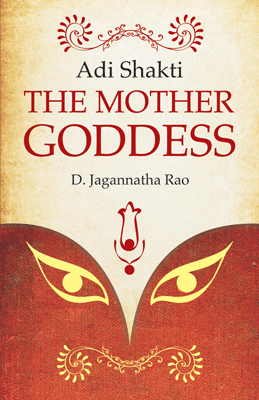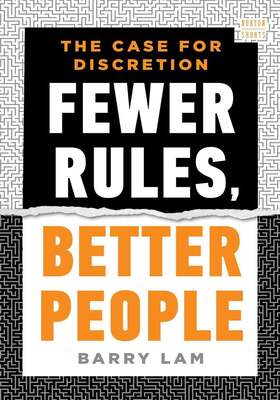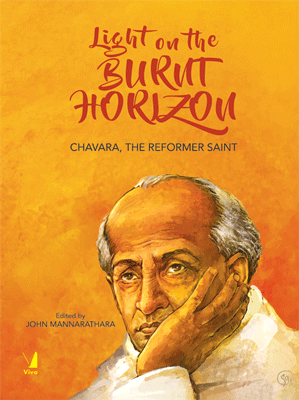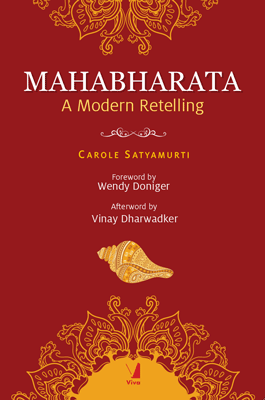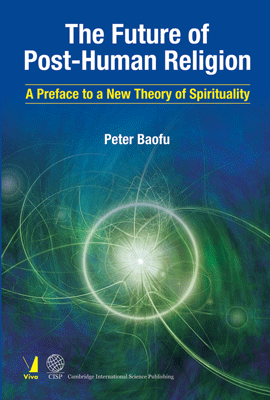Adi Shakti The Mother Goddess
Adi Shakti The Mother Goddess
₹895.50 ₹995.00 Save: ₹99.50 (10%)
Go to cartISBN: 9788130924151
Bind: Paperback
Year: 2015
Pages: 320
Size: 140 x 216 mm
Publisher: Viva Books Originals
Sales Territory: Worldwide
Description:
Hinduism is the only major religion in the world which emphasises the worship of God in the form of the female divinity, popularly known as “Adi Shakti • the Mother Goddess”, representing the very essence of life and love. The Mother Goddess is worshipped in various forms • as the Universal Mother, Uma/Parvati/Gauri as the consort of Shiva; Lakshmi as the consort of Vishnu and also as the goddess of wealth and prosperity; Saraswati as the consort of Brahma and also as the goddess of learning; Durga as the destroyer of all evil forces, etc. There are also traditions of worshipping the various manifestations of the Mother Goddess in groups • Nava Durga, Asta Lakshmi, Sapta Matrikas, Asta Siddhis, Dasha Maha Vidya, etc.
Apart from these popular forms, the Devi manifests in many dimensions - as Kaali, the purveyor of time, representing Kriya Shakti - the power of Action; as Lalita, the beautiful goddess of the three worlds, representing Jnana Shakti • the power of knowledge; as Bhuvaneswari, the Queen of the Universe, representing Iccha Shakti • the power of Desire; as Maha Maya -the great seductress, as Moola Prakriti • the primordial nature, etc. Again as “Nature” she represents both its benign and ferocious aspects in her “Saumya” and “Raudra” forms. In villages throughout India, She is also worshipped as the “Grama-Devata”- the village protector.
All this has led to the development of a rich and complex theology around the female divinity (Goddess as the highest principle, underlying all creation). Shaaktism considers Shakti as the motive force behind all action and existence in this phenomenal world. Shaakta Sidhanta encompasses nearly a wide variety of views and beliefs, some of them involving the highest forms of philosophical speculation. This book presents a bird's eye view of all these issues in order to give the reader a general understanding about Adi Shakti - the Mother Goddess.
Contents:
Worship of the Divine Mother
Goddess as the Divine Mother, Shakti • the Divine Power, Philosophic View, The Goddess Tradition, Evolution of the Goddess worship in Hinduism • Pre Vedic Period, Vedic Period, Female divinities during early Vedic Period • Ushas, Prithvi, Aditi, Saraswati, Vaak, Nirrti, Ratri; Later Vedic Period, The Period of Upanishads, The Epic Period; Worship of female divinities in South India, • Worship of Devi in Different Aspects • Devi in her Triple Aspect, Devi as the Consort of Vishnu and Shiva; Devi as Prakriti, Maya and Para Brahman; • Traditions in Devi Worship • the Chandi Tradition and Sri Vidya Tradition, Devi as the Goddess of the Earth, Goddess of Sanskrit language, Worship of Devi as sacred rivers, Worship of Devi through Music, Shaaktism • Shaaktism as a distinct sect, Shaakta Texts, Manifestations of Devi, Tantric Deities, Waxing and Waning images of Devi, Panchayatan Puja, Worship of Devi in villages as “Mother Protector”, Shakti Peethas • Adi Shakti Peethas, Maha Shakti Peethas, The popularity of the Goddess as Shakti.
Manifestations of the Divine Mother
Parvati, Saraswati, Sri (Lakshmi), Durga, Kaali, Sita, Gayatri, Radha Devi, Lalita Tripura Sundari, Kanya Kumari - Origins, Mythology, Characteristics and Worship. • Worship of Devis in Groups • Nava Durga, Asta Lakshmi, Dasha Maha Vidya, Sapta Matrikas, Asta Siddhis, Secondary Siddhis, Nitya Devis, Yoginis and Kalas,
Shaakta Sidhanta
Origins of Shaakta Sidhanta • Why did Acharyas ignore Shaakta Sidhanta” Role of Adi Shankara, Fundamental differences between Shaakta and Advaita Sidhantas, “Maya Vada” in Advaita and Shaakta Sidhantas, Shaiva Sidhanta, Unity & Identity between Shiva and Shakti, • Evolution of Shaakta Sidhanta • Shaakta Literature, Manifestations of Maha Devi • as Moola Prakriti, Interpretation of “Duality within the Unitary Principle”, Devi as Para Brahman, Devi in her “Nirguna” and “Saguna” Aspects, Devi as “Brahma Vidya”, • Interpretations of Shaakta Sidhanta • by Puranas, by Lalita Sahasranama, by Tantra, • Influence of Shaakta Sidhanta on Indian Philosophic Thought, Reasons for giving Minor Importance to Shaakta Sidhanta, Sri Ramakrishna's Views on Shaakta Sidhanta,
Important Shaakta Scriptures
Origins of Shaakta Literature • Shaakta Upanishads, Shaakta Puranas, Agamas & Tantras, Other Important Sources, • Devi Mahatmya, Devi Sukta, Lalita Sahasranama, Soundarya Lahari, Devi Khadga Mala Stotra; Devi Bhagavata Purana, Bhavanopanishad, Tripura Rahasya, Devi Kavacha, Kaalika Purana, Tantra Shastras, Shaakta Tantras,
Satvic Practices in Devi Worship
Major Traditions in Devi Worship • Chandi or Kaali Kula Tradition, Lalita or Sri Kula Tradition, Sampradayas in Devi Worship • Dakshina Marga and Vama Marga, Endorsement of both paths by Lalita Sahasranama, • Samaya Mata • Equality and Unity between Shiva and Shakti, Characteristics of Samaya Mata, Bahiryaga Krama and Antaryaga Krama, • Essential Forms of Worship in Samaya Mata • Bhakti, Puja, Shuddha Vidya, Mantra • Classifications of Mantras, Moola Mantra, Bija Mantra, Navakshari Mantra, Japa, Japa Mala, Dhyana, Astanga Yoga, Nyasa, Mudras, Yantra, Mandalas,
Sri Vidyopasana
Sri Vidya • Origins, Types, Traditions, Characteristics, Importance, Sources of Sri Vidya Practice, Philosophy of Sri Vidya, Sri Vidya as “Yoga Sahasra”, Initiation into Sri Vidya, • Lalita Tripura Sundari • Mythology, Description, Abode, Chintamani Gruha, Philosophical Meaning of the Abode, Lalita in her Triple form, Lalita as Matrika Devi, • Panchadasi Mantra • Mystical Meaning, Shodashakshari Mantra, Ka-adi and Ha-adi Vidyas, Panchami Vidya, • Sri Chakra • Description, Mystical Meaning, Relationship with the Human Body, Bijaksharas, Types of Sri Chakra, Materials and Colours used in drawing Sri Chakra, Nitya Devis, • Description of Nine Avaranas of Sri Chakra • Trailokya-mohana-Chakra, Sarva-asa-paripuraka Chakra, Sarva Sanksobhana Chakra, Sarva Sowbhagyadayaka Chakra, Sarvartha-sadhaka-chakra, Sarva-Rakshakara-chakra, Sarva-Rogahara-chakra, Sarva-Siddhi-prada-chakra, Sarva-anandamaya-chakra, Sri Vidya worship, • Worship of Other Deities under Sri Vidya • Sri Chakra and other Devatas, Shaakta Mantra Shastra, Sampatkari, Aswarudha, Moola Vidyas in Sri Vidya • Gayatri, Baala, Panchadasi, Shodasi, Anga Vidyas, The six Amnayas, Important Stotras of Lalita Tripura Sundari,
Tantric Practices in Devi Worship
Historical Background, Absorption of Tantric Practices by Vedic Religion, Development of Tantric Practices in Buddhism, • Objectives of Tantric Practices, the Tantric Philosophy, Religious Sects Practicing Tantra, • Characteristics of Disciples • Classification of Disciples • Pashu Bhava, Veera Bhava, & Divya Bhava, Characteristics Expected of a Disciple, Importance of Guru in Tantra. • Tantra • What is Tantra” Components of a Tantra, Tantra and Shakti Yoga, Symbolism in Tantrism, Characteristics of Tantric Practice, Tantric Rituals”Characteristics, Classification, Methods, Mandalas, • The Seven Acharas • Description, Classification, Comparison of Dakshinachara and Vamachara, Kulachara, Kaula Marga, Pancha Makara • Symbolic Substitutes, Philosophical meaning, Vamachara • Characteristics, Methods, • Misconceptions about Tantra • Misconceptions about Shaaktism,
Dasha Maha Vidya (Worship of the Ten Wisdom Goddesses)
Dasha Maha Vidya • Origins, Classification of Goddesses, Uniqueness, Consorts & Colours of these Goddesses, Relation to Chakras of Shakti Yoga, Important Characteristics of these Goddesses, Typical Tantric Practices in a Maha Vidya, • Depiction and Tantric Procedures in the Worship of Each Goddess of Dasha Maha Vidya • Maha Kaali • Representing Two Aspects of the Supreme Reality • As the Destroyer and As the Purveyor of time, Kaali Kula, Kaali as the Spiritual Mother, Kaalika Mantra, • Tara ”Tarana Shakti, Dual nature of Tara, Tara in Buddhism and other Religions, • Lalita Tripura Sundari • Lalita as Para Brahman and the most beautiful goddess of the three worlds, Sri Chakra & Sri Vidya, Akarshana Shakti, Temple Worship, • Bhuvaneswari • Comparison of different Aspects of the Divine Mother, Queen of the Universe, Vikasana Shakti, Interpretation of Bija Mantra, Yantra, • Bhairavi • Comparison of Lalita and Bhairavi, The Wisdom Goddess, • Chinnamasta • Symbolic Interpretation of the Image of the Goddess, Chedana Shakti, • Dhumavati • The Widow Goddess, Symbolic and Philosophical Interpretations of the image of the goddess, Avarana Shakti, • Bagalamukhi • Stambhana Shakti, Reversal of the Opposites, Pitambari Devi, Mantra & Magical Powers, Sava Sadhana, • Matangi • Mohana Shakti, Mantrini, Tantric Saraswati, The Goddess of magical powers, • Kamala • The Goddess of the Lotus, Comparison of Kamala with Lakshmi, Characteristics, • Relationships between Goddesses of Dasha Maha Vidya • The First Trinity, The Second Trinity, Kaali Kula, Sri Kula, Association of Goddesses with Dashavatara and Navagrahas, Benefits of Worshipping the Goddesses, Tantric Rituals and Levels of Sadhana,
Shakti Yoga
Yoga, The Three forms of the Human Body, Prakriti, Purusha, The Divine Mother as Para Brahman, • Shakti Yogah Sri Chakra, Spiritual Path to Realisation, Awakening of Kundalini, Steps in Kundalini Yoga, Procedures in Awakening of Kundalini, Panchopachara Puja, Chakras and Presiding Yoginis, The structure of six chakras and Granthis, Two Margas • Dakshinachara and Kulachara, • Description, Presiding Yogini and Opening of each of the Six Chakras • Muladhara, Swadhisthana, Manipura, Anahata, Vishuddhi, and Aagna; Sahasraara • Opening of Sahasraara and Raining of Sudha Rasa on the sadhaka, • Spiritual Experiences in Chakra Sadhana, Variations in Kundalini Yoga Sadhana, Astral Experiences, Dasha Maha Vidya and Shakti yoga, Transformation of “Nirguna Brahman” to “Saguna Brahman” through Shakti Yoga, Stages of Vaak, Nada Bindu Yoga, Laya and Hata Yoga, Suggested Practices as part of Yoga Sadhana,
Annexure 1: Religious Concepts in Hinduism • Annexure 2: Extreme Tantric Practices • Annexure 3: Some Important Practitioners of Tantra • Annexure 4: Bhakti • Annexure 5: Samanvaya between Shaivism, Vaishnavism & Shaaktism • Annexure 6: Dating of Hindu Scriptures
About the Author:
D. Jagannatha Rao is a distinguished educationist, numerologist and author. He was formerly Director in the Department of Education, Government of Karnataka. He has authored the following books:
1. Education in Karnataka (2008, published in English and Kannada)
2. Elementary Education in India (Viva 2010)
3. Browse Your Future through Numerology (2010)
4. Essence of Hindu Religion and Philosophy (Viva 2012)
